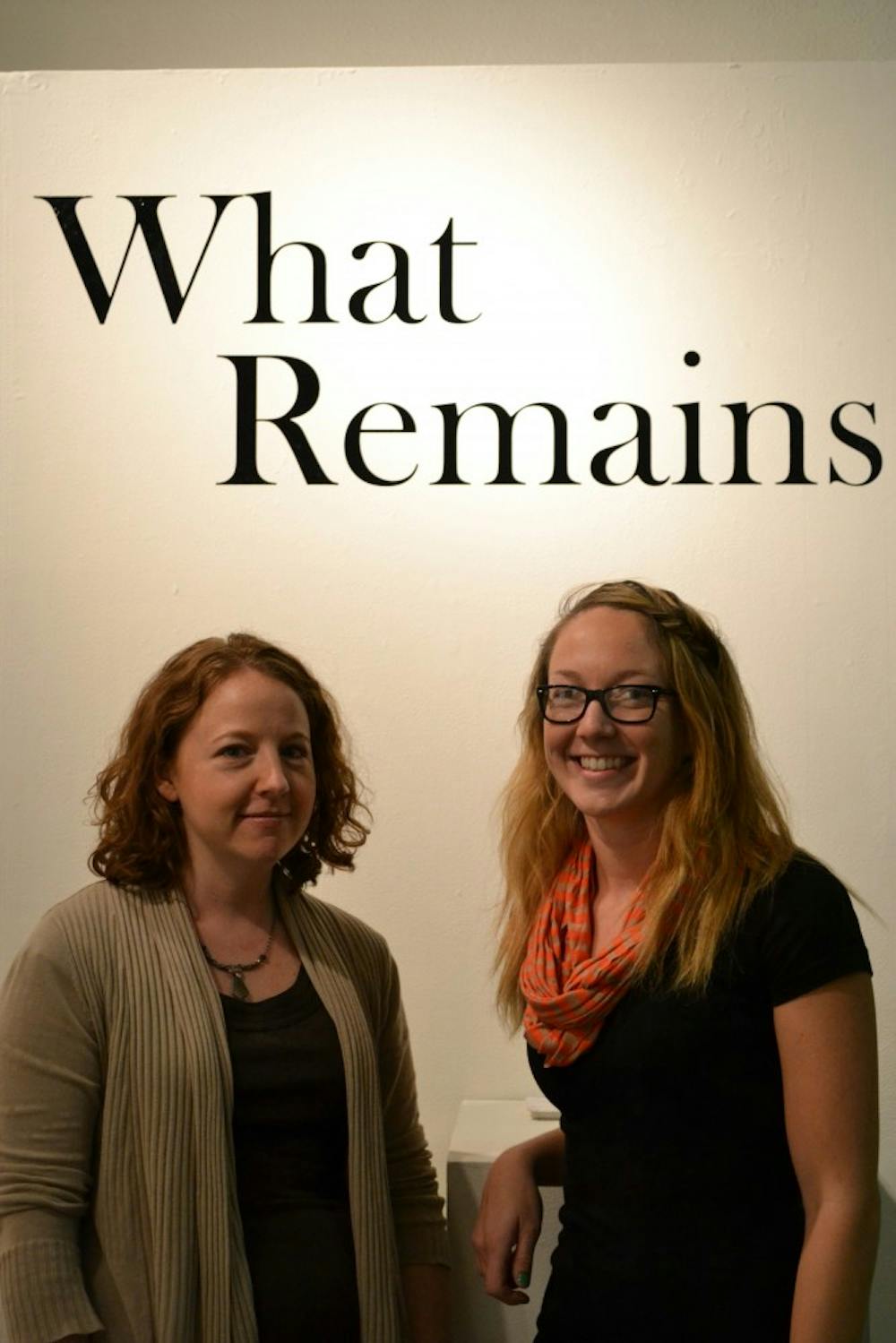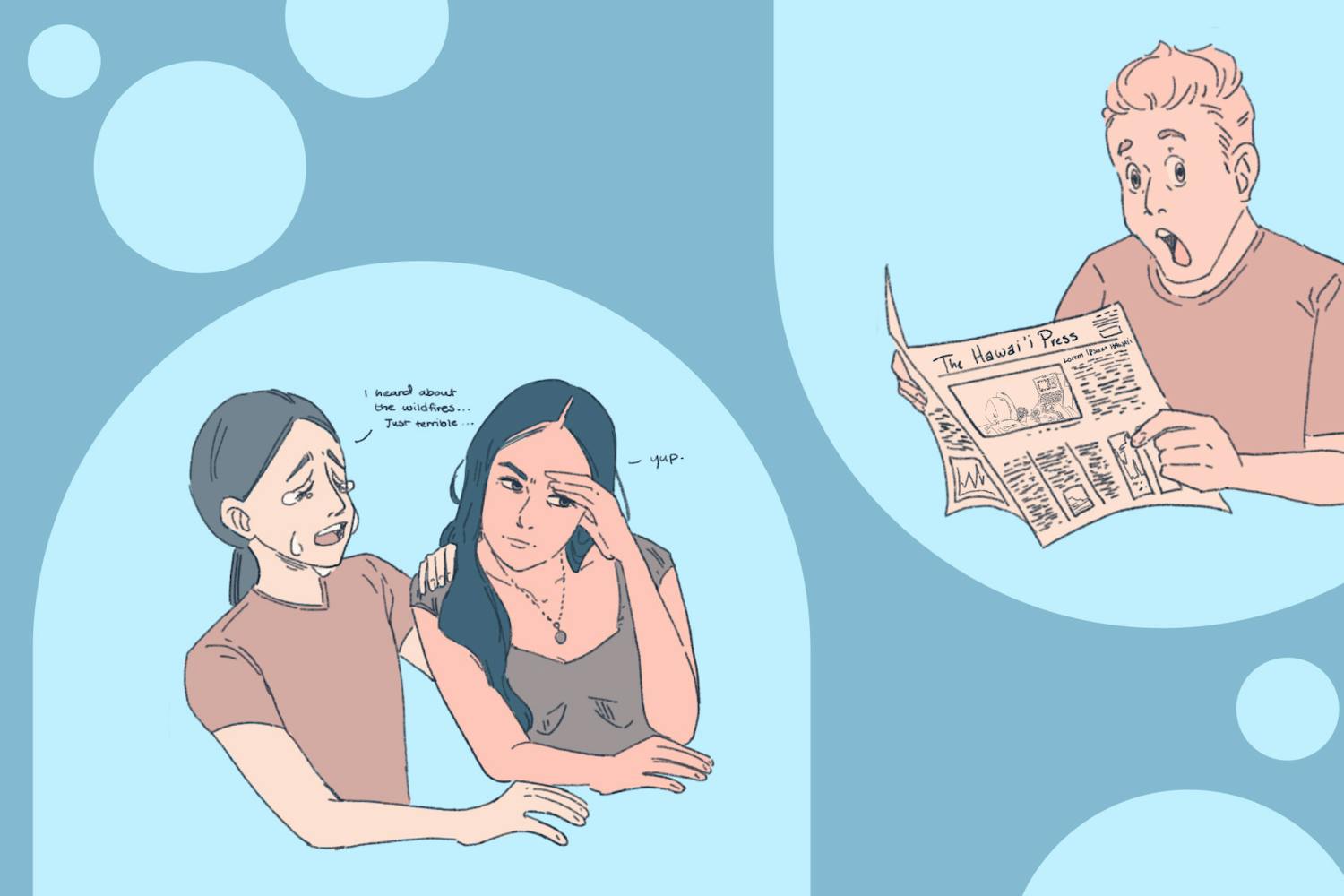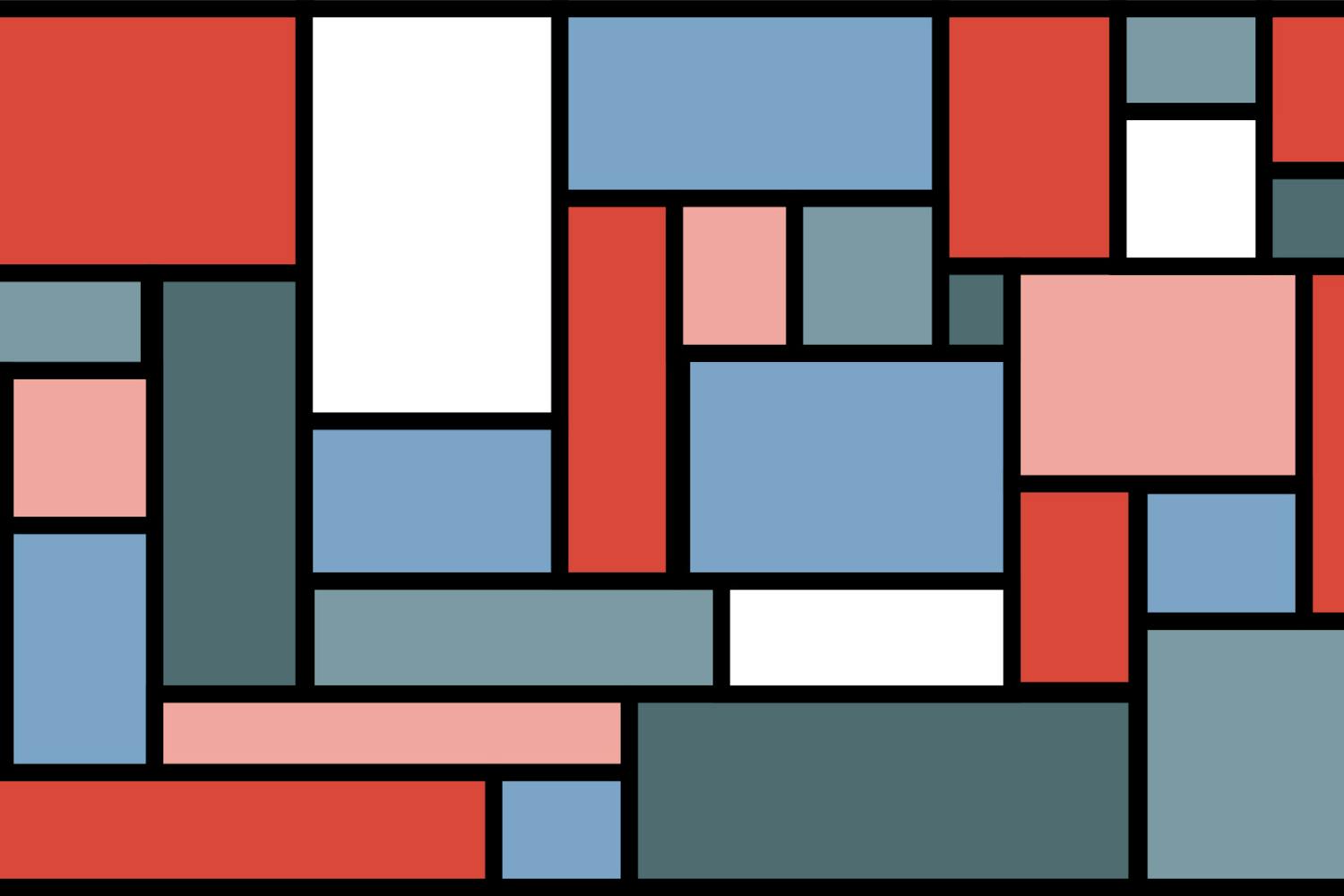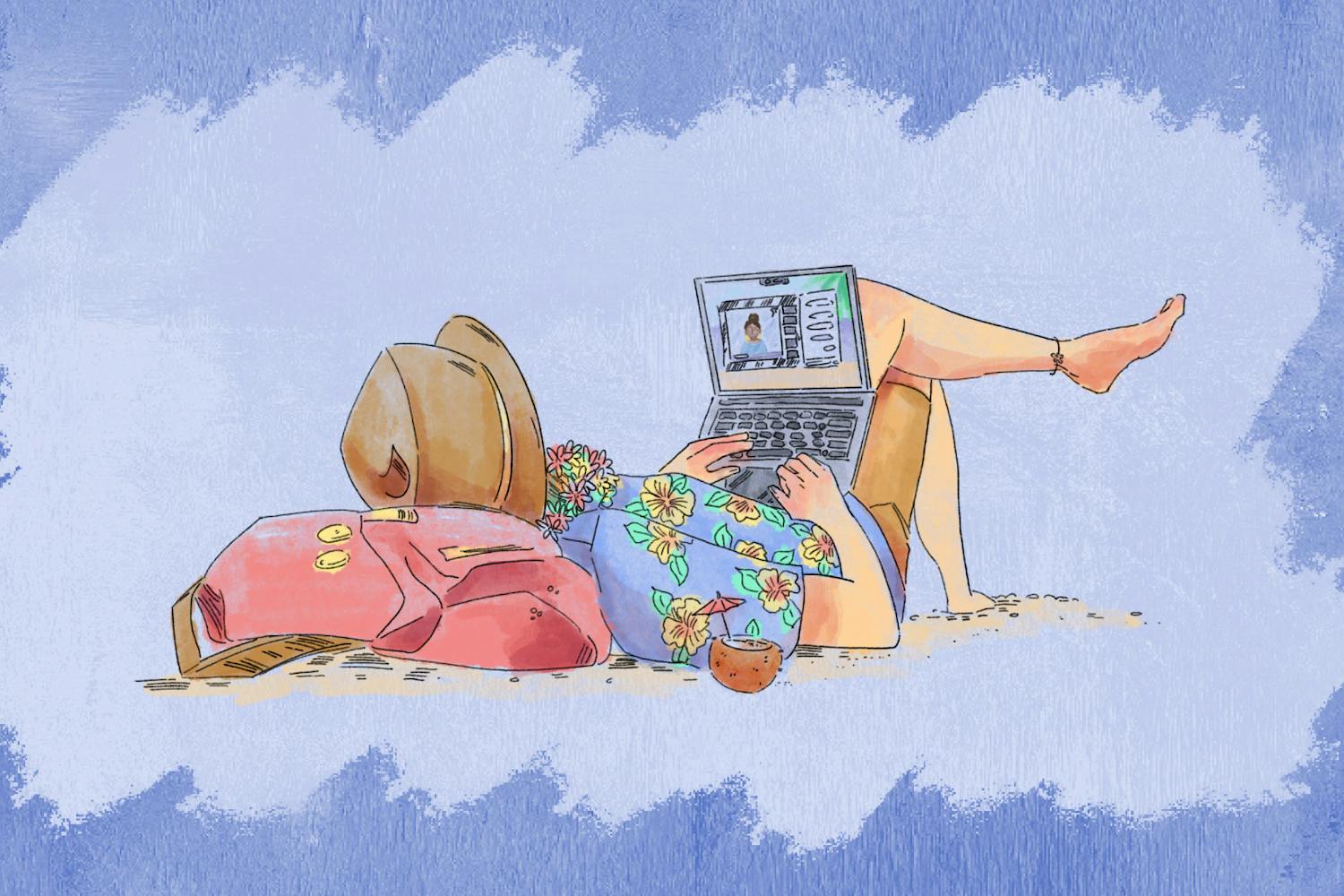 Jillian Schley, left, and Sarah Quintana, right, share the same passion for art and the beauty in simplicity.
Jillian Schley, left, and Sarah Quintana, right, share the same passion for art and the beauty in simplicity.Photo by Mackenzie McCreary
She used to hate it.
In her childhood, the father of drawing graduate Sarah Quintana would take her and her siblings on road trips where they would stop for photo-ops of abandoned buildings.
“I remember getting so annoyed when I was a kid because he would always stop in these weird, gross, abandoned towns,” she laughs, remembering. “I was so bored, and we would just kick cans around while my dad took photos.”
Ever since she “could hold a pencil,” Quintana has drawn. With her uncle making a living as a painter and her police officer father doing photography on the side, Quintana says she doesn’t think she ever had a choice about pursuing art: “I never, just not did it. I always wanted to be in that field.”
Quintana chose to study photography at the Art Institute of Denver after graduating from high school. But at one point in a drawing class she realized that she wanted to learn more about drawing and painting, and practice photography as a hobby.
“There was nothing else I wanted to do,” she says with a smile.
And so the years of walking through decrepit, decaying buildings provided Quintana with inspiration for her pieces in the exhibit “What Remains,” which was on display in the ASU Step Gallery Oct 22-26. Her oil-on-canvas paintings portray scenes of decay and the effect of time on these places and their character.
One piece shows cracked tiling and rusted pipes, while another piece immerses the viewer in a room with a chair and an old refrigerator as fading sunlight slants across the wall.
 Quintana draws inspiration from trips she used to take with her dad that used to bore her.
Quintana draws inspiration from trips she used to take with her dad that used to bore her.Photo by Mackenzie McCreary
“Now I’m like my dad,” she grins. “I just find a lot of interest in the old and most people want to tear it down and build new. But I just really cherish it and all the history behind it.”
Quintana says she draws inspiration from online photographs and from her visits to places near Wickenburg, Ariz. and Point Creek Ariz., which all blend together in her work.
Using the vibrancy of the oils, Quintana says she wants people who see her paintings to be curious about these spaces.
“In some of these pieces it’s kind of ambiguous about what it is,” she says. “I just want them to feel the way I feel.”
Quintana is currently applying to graduate school for art history and curatorial work at ASU. She says she hopes to someday work as a curator for an art museum or gallery.
The exhibit “What Remains” was put on as a joint show between Quintana and fellow drawing graduate Jillian Schley, with whom she had shared drawing and exhibition classes before they graduated together last spring.
“We’re both interested in capturing the disintegration of materials and capturing that in different ways,” Schley says of how she and Quintana found a common ground for the show.
However, Schley’s pieces are entirely different from Quintana’s.
Schley is the youngest of five and says her mother worked endlessly waiting tables to support her family. Schley says that as a child she was very introverted. Often left to her own devices, she spent a lot of time on her own discovering what she liked to do.
But school and the art room have always been her sanctuaries.
“I’ve always been a geek. I was always that kid who knew too much,” she says. Schley says when she was in elementary school she would finish her work quickly and ask permission to spend her free time in the art room. There she would lose herself in her own personal art projects.
But despite her love of drawing and painting, Schley first pursued a Bachelor of Science degree in psychology with a focus in cognitive psychology from Florida State University. She says she denied herself the possibility of becoming a professional artist.
“I didn’t think that I could actually be an artist,” she says. However, at one point during her work in psychology Schley woke up and said, “I just want to make art.”
Schley says her husband, who works as an illustrator, pushed her into pursuing art. “He gave me the validation I needed. He’s the one that said 'You need to do what you want to do.’”
Where Quintana’s work focuses around subject matter, Schley’s work revolves around the materials and the process.
The pieces pull the viewer into a swirling state of mind as their thin, flowing shapes range from incredibly light to deep and dark. While some sharp-edged parts betray manipulation, dried puddles show the natural movement of the ink.
For “What Remains,” Schley used different colors of ink, which she poured and manipulated on drafting film to create a unique image when the ink dried.
Schley says that about a year ago she was experimenting with materials in the studio. One day she poured ink into a puddle on drafting film and just walked away. When she returned and saw how the ink had dried, she was intrigued by the new medium. “So I decided to push it and it served to renew my excitement about a series because the material excited me,” she says.
Schley says she uses a resist process, which involves natural materials to create impressions and navigate the ink on the film. But she will also let the ink do its own thing after it’s poured; an individual piece can be in one process or another for weeks at a time, she says.
“A lot of my work is about control and lack of control and finding a balance there,” she says. “I can walk away for hours and come back and work with it for a while.”
Both Schley and Quintana took Drawing III and IV with Professor Janice Pittsley in the School of Art with the Herberger Institute for Design and the Arts. Pittsley witnessed the development of their work for this exhibit.
“The fluidity of the material and the coincidence of how it would land and dry on the paper worked well with her theme of an evolutionary process rather than a predetermined image,” Pittsley says of Schley’s work.
Schley says she is inspired by the dryness of the Arizona desert after growing up in Florida and living in Seattle. She also draws an overall theme from the passage of time: “Trying to show what happens along the way, with those materials, is really interesting to me,” she says.
When she is creating one of these pieces, Schley says it’s almost like meditation — she can’t really describe her emotions during the process.
“It’s hard to put a name to it, but I know it when I feel it,” she says.
While she doesn’t have a specific goal for the future in mind, Schley works in a few museums and goes with the flow of things as time passes — much in resemblance to the artwork she creates.
“I think every artist wants to make art all the time, and I want to do that too,” she says. “But school is my oasis, so I would love to teach.”
Pittsley says it has been exciting to see the evolution of Quintana’s and Schley’s ideas and themes as they continue to study drawing and painting.
“This is a really good example of a communal studio environment because they were able to see that they had a common interest and it was really dynamic,” Pittsley says.
Both Schley and Quintana are content with the way the show turned out and seeing their pieces presented together.
They plan to continue painting and developing their art — because with the passage of time, inspiration grows from disintegration and decay.
Reach the writer at mamccrea@asu.edu or via Twitter @mackenziemicro





